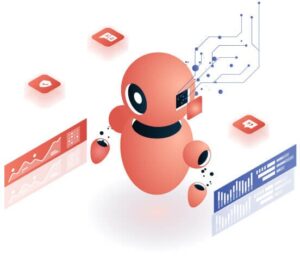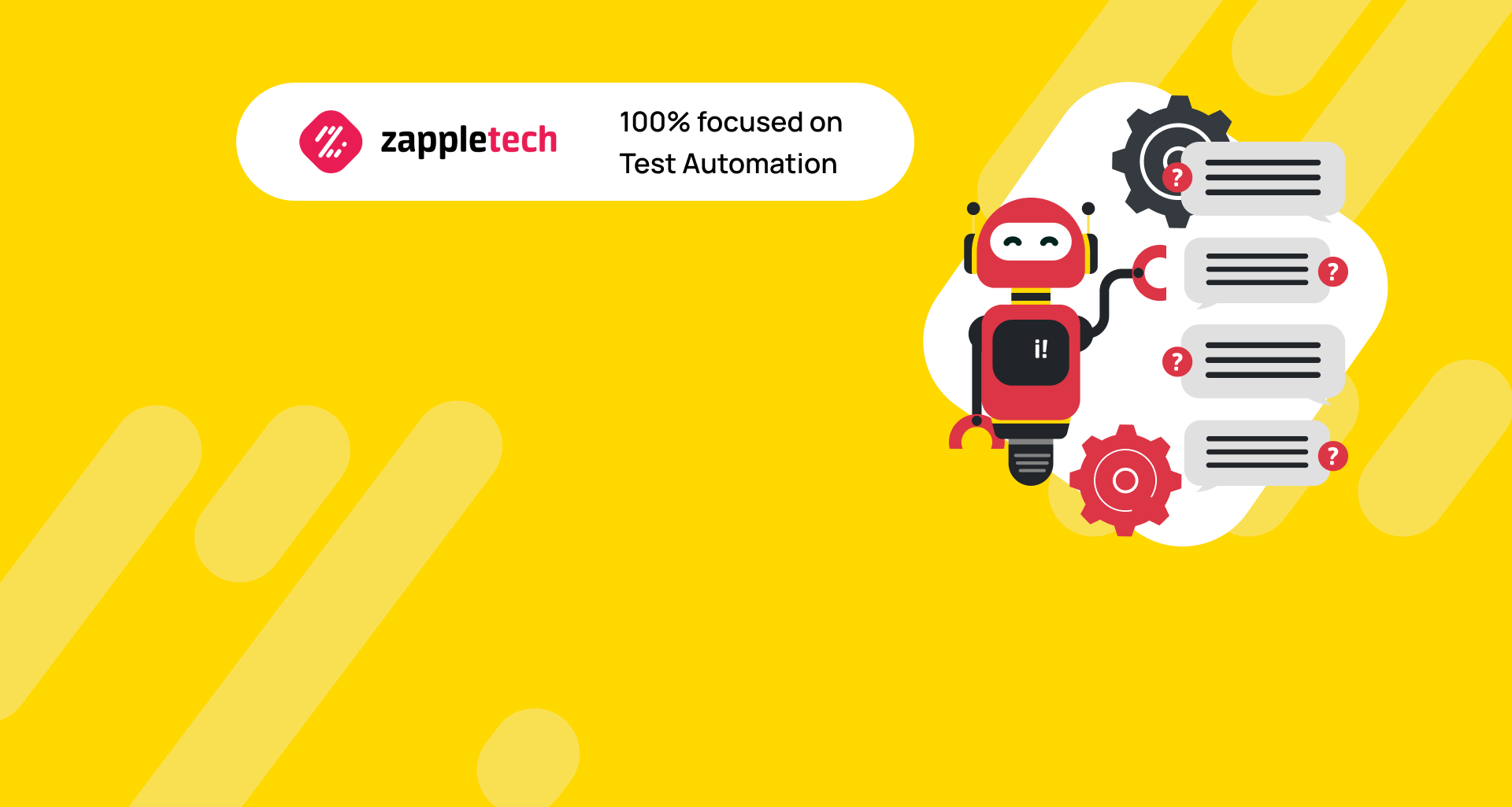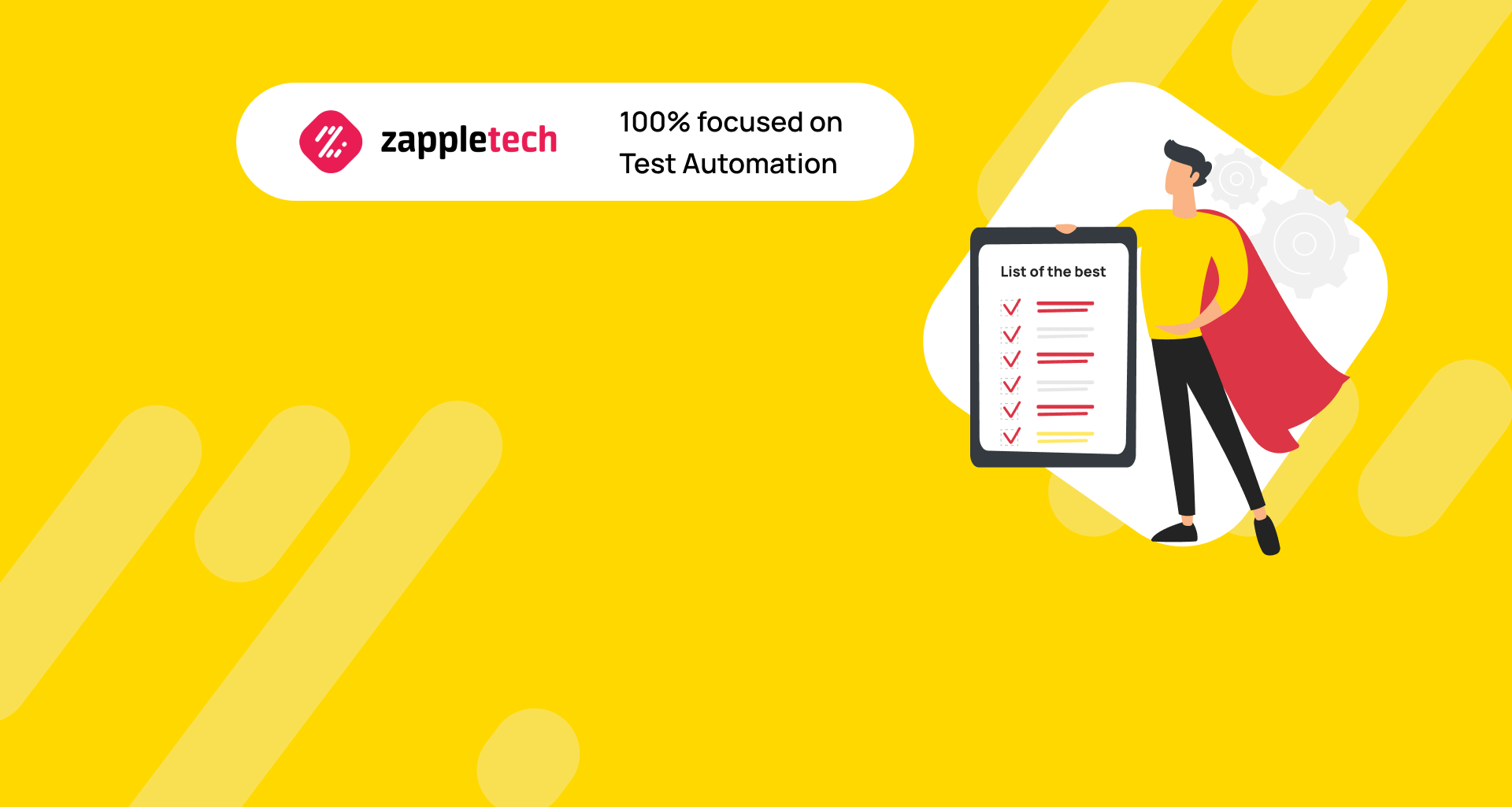Table of Contents
The Perspective of Chatbots: Business for Customers
AI technologies are developing rapidly, opening new perspectives for using bots in business as autonomous consultants. With their help, users receive qualified assistance, answers to their questions, and technical support. The most advanced programs can even place orders and organize delivery from warehouses to buyers. While much is already known about the benefits of AI, not everyone knows how they are developed and modified.
Nowadays, businesses and marketing have revised their values and taken a course towards modernizing user experience and communication. Chatbots have become indispensable helpers for brands on specialized resources, social networks, messengers, and specialized apps. Communication with customers has become a priority task for any organization engaged in trade or service provision. However, creating and optimizing a chatbot requires huge resources, time, and the labor of many specialists. QA departments are responsible for checking the performance and relevance of bots. They, along with their colleagues, use chatbot test automation tools and other utilities to ensure efficiency and accuracy in their chatbot functionalities.
The implementation of chatbots has revolutionized customer service, providing instant responses and resolving common issues without human intervention. This automation not only saves time but also enhances customer satisfaction by delivering swift and precise answers. As AI continues to evolve, the capabilities of chatbots will expand, offering even more sophisticated interactions and seamless integrations with various business systems.
Businesses leveraging chatbot test automation can streamline their operations, ensuring that their bots are reliable and effective. These tools simulate real-world scenarios to test the chatbot’s performance, identifying any issues before they affect end users. As a result, companies can maintain high standards of customer service and operational efficiency.
Moreover, chatbots play a crucial role in gathering and analyzing customer data, providing insights that help businesses tailor their strategies and improve their offerings. By using chatbot test automation, businesses can ensure that their bots handle data securely and accurately, safeguarding customer information and building trust.
In conclusion, the integration of AI technologies and chatbot test automation is transforming the landscape of business communication and customer service. As these technologies advance, businesses that adopt and optimize them will be better positioned to meet the evolving needs of their customers and stay ahead in a competitive market.
Chatbot automation testing: challenges, problems, and solutions

What is a chatbot? In general, it is code that analyzes user requests and produces relevant results. It consists of a stack of technologies: search algorithms, machine learning, and integration with multiple resources. As for the method of communication, bots can both respond with text and voice. And if there are no significant problems when writing the body of the program, they appear in large quantities during testing.
Back-end and front-end chatbot testing: goals and means
Do you know how testing chatbots is provided? The ZappleTech QA team works with them on a regular basis! We will tell you how digital assistants are tested during development and after release.
The back-end is checked by special utilities, universal or written for a specific product. They are also called “chatbot automation testing tools”. They run pre-written user scripts that mimic the actions of real people, checking the relevance of the output by bots. Tracking and fixing bugs, programmers optimize the code and bring it into a presentable and, most importantly, completely functional form.
Leverage specialized chatbot test automation tools that support scripting and offer features like conversation flow testing, response validation, and performance metrics. Tools such as Botium or TestMyBot can streamline the testing process.Sergey AlmyashevCOO, ZappleTech Inc.
Sometimes, there is a hitch with the Front-end because some chatbot automation testing tools do not work with visual interfaces. Usually, QA teams conduct manual checks to verify that the program is working. But it is a routine and time-consuming process, so various automation methods are increasingly used to optimize this activity and track errors more effectively.
Testing methods: chatbot automation testing and manual testing
As a rule, different approaches to testing chatbots give better results in a bundle than separately. Frankly speaking, this statement is true for any testing of IT products. The point is that you can catch bugs manually or automatically in Front-end and Back-end parts. But with manual testing, some errors may not be detected, and with automated testing, there is also a chance to miss small but actual problems.
Manual checking is usually applied at later development stages or at the final release when the code and the interface are prepared and debugged. Testing is done on various devices and scenarios, which accurately simulate the real actions of clients.
Automated tests are often used for bug tracking in helper code in early sprints. This approach minimizes problems directly in the back-end and helps to optimize the software body.
Chatbot automation testing: what is tested by experts

Depending on the business area in which bots are used, the pattern of user interaction with them is different. Therefore, it is required to figure out what the assistant should do and what results to provide upon request. For instance, in customer service, a bot might be designed to handle frequently asked questions, guide users through troubleshooting steps, or escalate complex issues to human representatives. In e-commerce, a chatbot may assist users in finding products, processing orders, or tracking shipments.
To ensure these bots function effectively, it is essential to conduct thorough chatbot test automation. This process involves systematically testing the chatbot’s responses, behavior, and performance under various conditions to guarantee it meets the intended requirements and delivers accurate results. Chatbot test automation can help identify potential issues, streamline the user interaction flow, and improve overall user satisfaction by ensuring that the chatbot consistently provides relevant and helpful responses.
Integrating chatbot test automation into the development cycle can save time and resources while enhancing the bot’s reliability and efficiency. Automated tests can simulate numerous scenarios, including edge cases and unexpected user inputs, to verify that the chatbot handles them appropriately. This approach not only helps in maintaining a high-quality user experience but also facilitates continuous improvement and scalability as the chatbot evolves to meet the changing needs of the business and its customers.
To do this, let’s consider the classic areas:
- Medicine: the bot answers key questions, makes appointments with specialists, and advises on treatment options and procedures.
- Communication: the program analyzes requests, compiles responses, provides information on tariffs and instructions for connecting/changing, etc., solves technical issues, and sends requests to support.
- Media: helps in navigation, receives materials, and analyzes information according to specified algorithms.
- Trade: generates orders, receives requests from users, compares products, and answers basic questions.
- Services: generates prices, templates, accepts applications for processing, and directs clients to qualified specialists.
- Finance: advises on the terms of loans, analyzes credit histories, and even independently makes decisions on the issuance of loans.
Here are the most typical scenarios, but even they lead to some challenges when testing.
Depending on the business area in which bots are used, the pattern of user interaction with them is different. Therefore, it is required to figure out what the assistant should do and what results to provide upon request. For instance, in customer service, a bot might be designed to handle frequently asked questions, guide users through troubleshooting steps, or escalate complex issues to human representatives. In e-commerce, a chatbot may assist users in finding products, processing orders, or tracking shipments.
To ensure these bots function effectively, it is essential to conduct thorough chatbot test automation. This process involves systematically testing the chatbot’s responses, behavior, and performance under various conditions to guarantee it meets the intended requirements and delivers accurate results. Chatbot test automation can help identify potential issues, streamline the user interaction flow, and improve overall user satisfaction by ensuring that the chatbot consistently provides relevant and helpful responses.
Universal scripts and functions for chatbot automation testing are instrumental in this process. Let’s start with the trivial: checking the functionality of each critical parameter of the bot. Standard scripts are used almost without restrictions in any chatbot automation testing tools, which reduces the time for writing and debugging them. Many QA specialists, such as the ZappleTech team, use a universal methodology. This approach involves using predefined scripts that can be adapted to different chatbot platforms, enabling quicker and more efficient testing processes.
By employing these universal scripts, testers can ensure that all critical aspects of the chatbot, including intent recognition, response accuracy, and interaction flow, are thoroughly evaluated. This not only speeds up the testing phase but also enhances the overall reliability and performance of the chatbot. Implementing a robust chatbot test automation strategy with universal scripts and functions allows businesses to deliver a seamless and engaging user experience, regardless of the specific application of the chatbot.
They test:
- Response speed: the lower the delay, the better. As practice shows, if users do not receive an answer within 5 seconds, they are 90% likely to leave the resource.
- Relevance: the bot should analyze queries in any word form and give the most accurate result. For this, developers even create special dictionaries that contain all language “perversions”, including transliteration and morphologisms.
- Correction: even if the AI does not understand the issue, it must analyze it and offer the client an authentic option.
- Personalization: bots usually use voice or text to communicate, but there are combined options when it is essential to achieve resonance between the style of the graphic response and the tone of the sound.
- Structuring: chatbots do not always dialogue with users, offering a logical control menu with pre-generated templates. Tests identify inactive items or navigation bugs.
- Learning: if the program uses AI, it memorizes questions and communication styles and learns to produce appropriate results.
- Cross-platform: The chatbot should work the same for everyone regardless of the client’s device: PC, tablet, or smartphone. If it is a web solution, its adaptation should not be complicated, but optimization is necessary for the installed apps.
These features are found in almost every smart assistant or chatbot. If we talk about such giants as Google, Yandex, Apple, and Amazon, their voice assistants stand head and shoulders above simple bots. Cloud computing power and processors with dedicated cores for machine learning (installed in smartphones and tablets) are used to train them. We will talk about these advanced products in future articles. Now let’s summarize.
Chatbot automation testing tools are used to test the functionality of assistants, regardless of the platform where they will be deployed. There are specialized utilities for tests and universal ones: Selenium, Appium, Atata, Ranorex, and others. Methods for tracking non-working functions are also common for most AI solutions, adjusted for the scope and depth of integration with third-party services and products. If you have any questions about chatbot automation testing or want to order this service, please contact the managers of ZappleTech.
Keep your test scripts up-to-date with any changes or new features added to the chatbot. Regular updates ensure that your tests remain relevant and continue to validate the chatbot’s functionality and performance accurately.Mikhail BodnarchukCDO, ZappleTech Inc.
Conclusion
In conclusion, automating a chatbot test involves several strategic steps to ensure the bot’s effectiveness and reliability. The process begins with identifying the critical parameters and functionalities the chatbot must deliver, followed by the implementation of universal scripts and functions. These standard scripts, which are compatible with various chatbot automation testing tools, significantly reduce the time required for writing and debugging, thus enhancing the efficiency of the testing process.
By utilizing a universal methodology, as practiced by QA specialists like the ZappleTech team, comprehensive testing of the chatbot’s responses, behavior, and performance across different scenarios is ensured. Chatbot test automation is essential for detecting potential issues, streamlining interaction flows, and guaranteeing that the chatbot provides accurate and relevant responses. Integrating robust chatbot test automation strategies allows businesses to ensure their chatbots deliver a seamless and engaging user experience, consistently meeting users’ needs and expectations.







